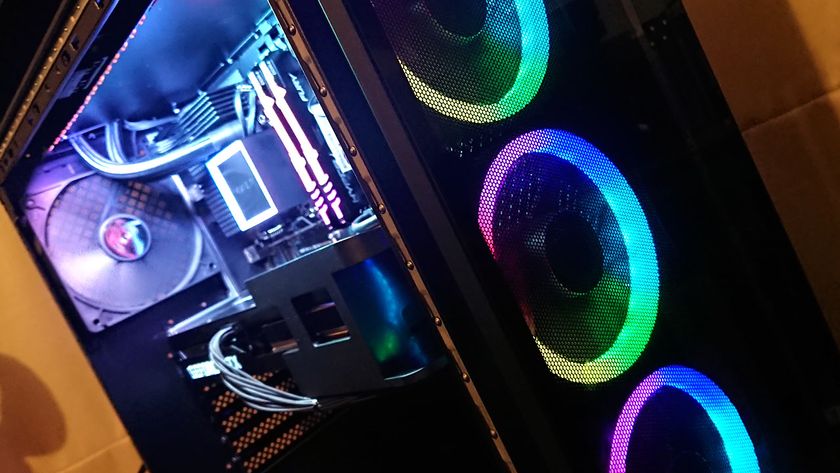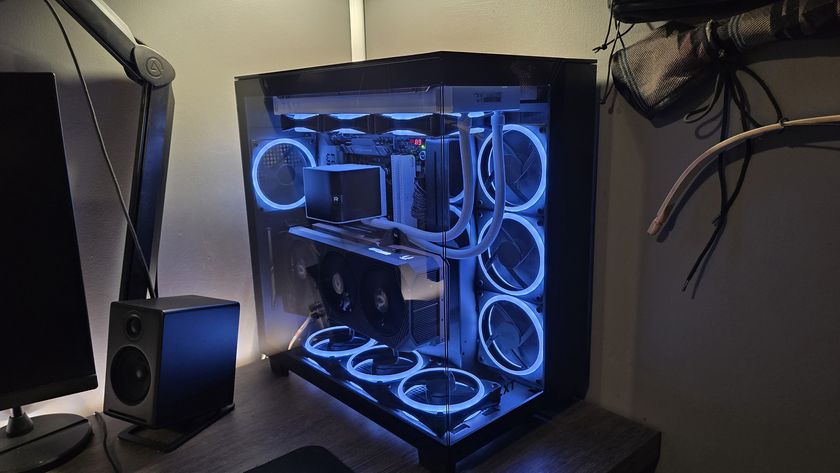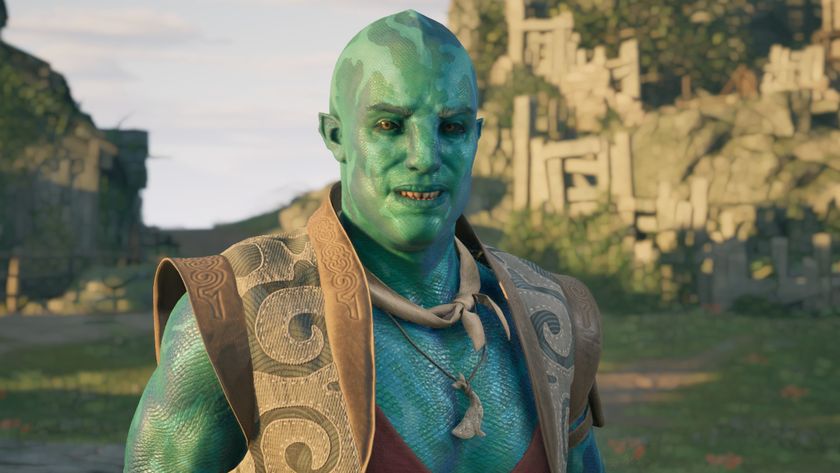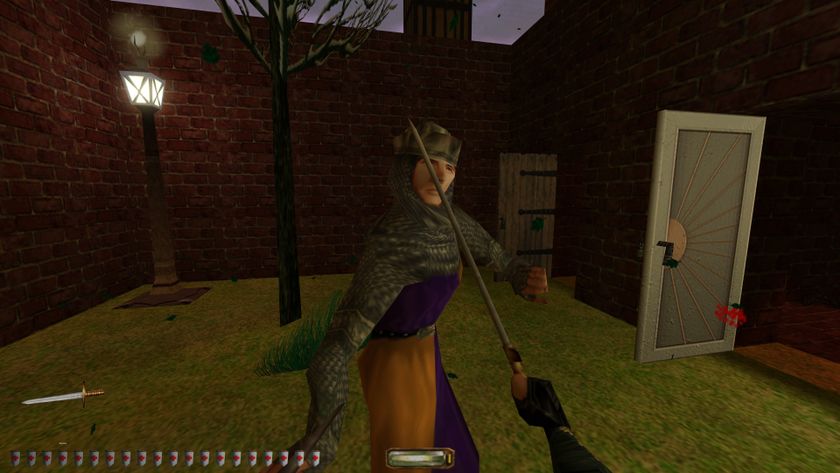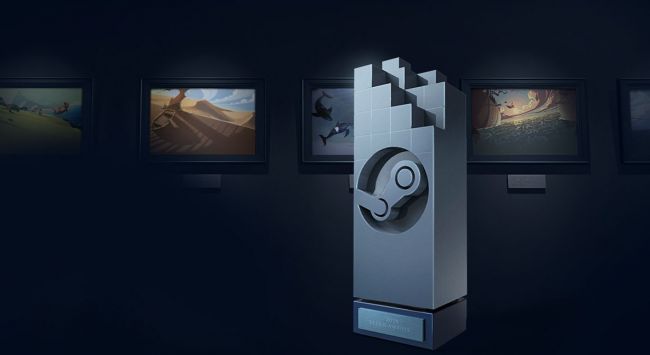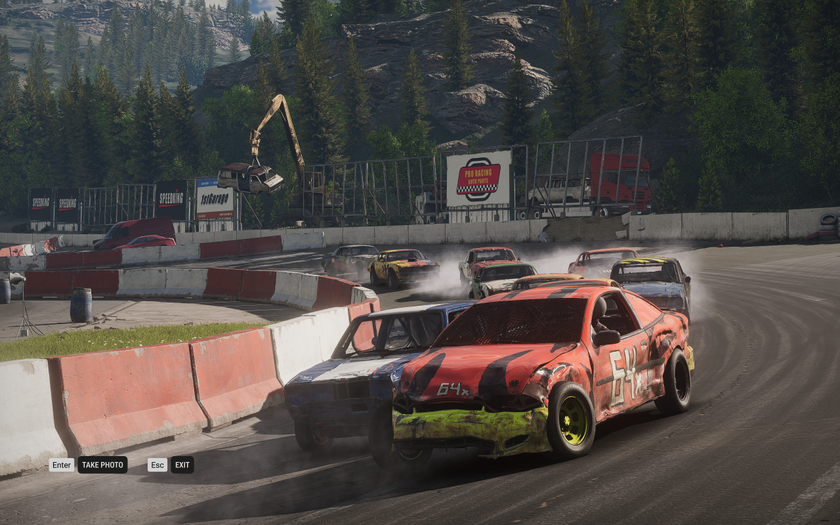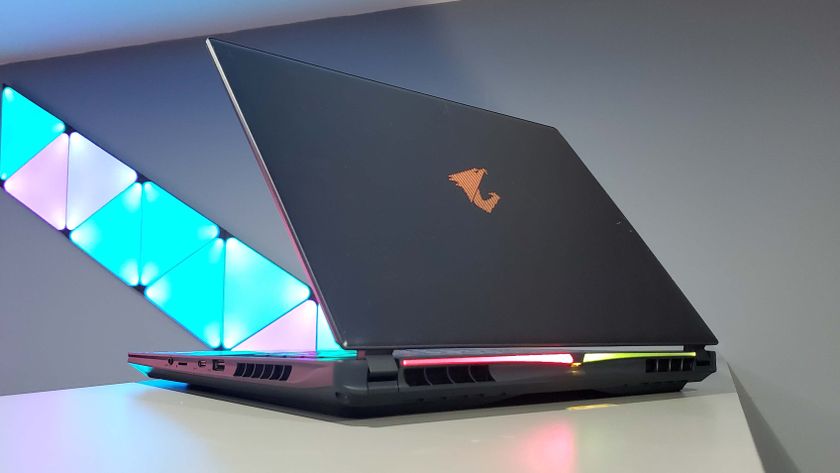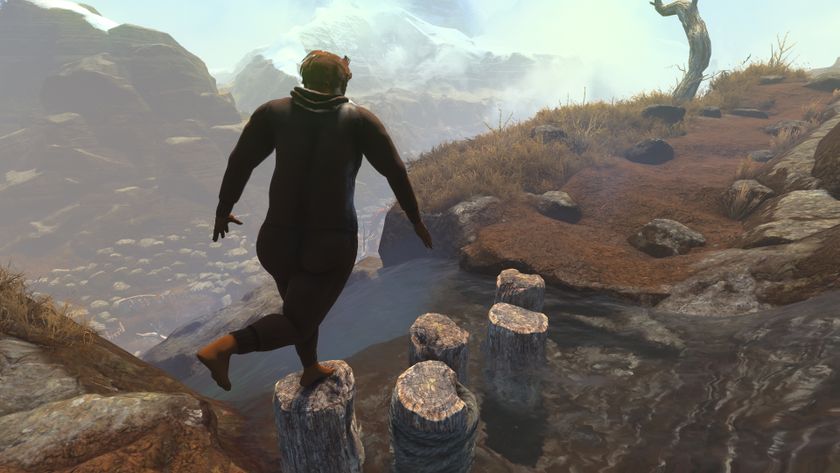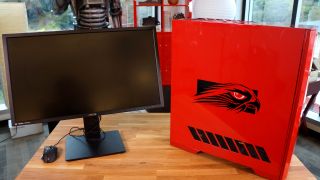
I don’t have what you would call a 'high-end' gaming PC at home. It isn’t just a potato hidden within a bright orange case, but it’s not the LPC either. I built it on a budget last year and it gets my games played and my internet surfed, a situation I imagine describes a decent portion of PC gamers. Those willing to shell out the cash for the absolute best possible rigs push developers to test the limits of PC gaming, but I think a lot of PC gamers just want to play games. I’d love to be able to max out any game and have it run buttery smooth or to upgrade my GPU, it’s just not in my budget. So when I was told to bring home the $8,000 Falcon Northwest Mach V we’ve been referring to as the Red Baron, it felt like Christmas came early.
For a week, the Falcon Northwest was my work and gaming rig, complete with a 4K monitor powered by three GTX 980s. It is an absolute monster, and I was excited to be able to really spend time on it. Admittedly, shoving my PC to the side to make room felt a bit adulterous, but the Mach V really is on another level in terms of power. I had high hopes for gaming and regular Windows use at 4K resolution. Unfortunately, my time with the Red Baron, and the experience of 4K, were nowhere near as revolutionary as I had hoped.
Flying high
My own PC is lovingly named the Orange Box. It’s got a GTX 760, 8GB of RAM, an Intel i5-4670 CPU, and a Kingston 124GB SSD for the OS. Unfortunately, it’s sort of downhill from there. My screen was a hand-me-down Dell S2409W 24” monitor from my dad’s office, I’ve been using the same Microsoft RT2300 keyboard and Logitech MX518 mouse for nearly a decade. My 750GB hard drive was torn out of my college laptop after its graphics card died and is unceremoniously velcroed to the inside of my orange BitFenix Prodigy M case. Other than the case itself, this is not a pretty rig.
Still, the Orange Box is strong enough to run Middle-earth: Shadow of Mordor with High settings (the best is Ultra) at 1080p, 60fps and that suits me just fine. In fact, it’s enough to run most new games at medium to high graphics without hurting the framerate too much. I definitely don’t hit 60 fps on the power-houses like Dying Light—I hover just above 40fps at High settings—but they run smooth and I’m usually willing to sacrifice the frames for higher textures, especially on my 30hz monitor. Besides, I also play a lot of simpler games, and three GTX 980s with 32GBs of RAM would be overkill on the likes of Towerfall: Ascension or Hearthstone.
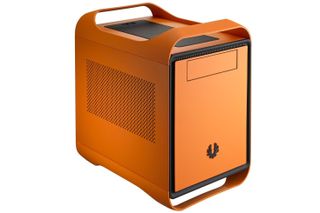
When the Red Baron was thrust onto my desk for the week—or, next to my desk, as it would probably make my desk collapse under its weight by day three—it represented an upgrade that I could only dream of. After carefully weighing the cost-to-performance trade-off for each piece of my personal rig, I suddenly had the absolute best at my fingertips. I was given the chance to play on the best that money could buy without needing to worry about the hefty $8,000 price tag that came with it. Because of my comparatively humble setup, my expectations of the Baron weren’t just high, they were limitless.
This computer has three GTX 980s, 32GB of RAM, an Intel Core i7-5960X, half a terabyte of solid state in the form of an M.2 SSD, and a 3TB HDD—not to mention a shiny red paint job. It redefines the term “beastly.” Until Nvidia announced the Titan X at GDC, the Red Baron essentially represented the peak of what is currently possible in a gaming computer. Probably the only way it could be better is with a fourth 980, and when you begin debating between your third and your fourth top-of-the-line graphics card, you’re probably splitting hairs. I thought this computer could do anything. Play any game at max settings without beading up a single drop of sweat from its water-cooling tubes.
Crash landing
Armed with an Asus PB287Q 28” 4K monitor—along with a new Corsair K70 keyboard and a Logitech G502 Proteus Core mouse for the full upgrade experience—the first thing I did was install Shadow of Mordor, the prettiest modern game I have spent significant time with, to see just how gorgeous it could look. I cranked all the settings to the top, set the resolution to 4K, and watched as my sky-high expectations came crashing back down to Earth. It ran slow.
The biggest gaming news, reviews and hardware deals
Keep up to date with the most important stories and the best deals, as picked by the PC Gamer team.
By that I mean the framerate dropped to 17fps whenever I got into combat, and wasn’t much better standing still. With the power of three 980’s, I expected the Red Baron to cut through any game at max settings like a hot sword through orc, but the sword got stuck half-way through.
In order to get the game running above 60fps without dropping in combat, I had to lower the settings down to Medium, with a few reaching the High marker. The 4K resolution proved to be too much. 3840x2160 resolution is still unrealistically demanding for graphics cards with 4GB of VRAM, just as it was when we wrote about gaming in 4K a year ago. Even if you have three of them. Increasing resolution exponentially increases the strain on your GPU. 4K can bring even the Red Baron to its knees at max settings.

The real framerate killer, though, was antialiasing. For a more detailed explanation of anti-aliasing, read this guide from our own Tyler Wilde, but essentially it smooths the rough edges of a game’s pixels, and 4K has a lot of pixels. Over 8 million, in fact. With that incredibly high pixel density, I could turn off anti-aliasing without noticing a graphical difference, but now we start to touch on the disappointment of my time with this $8,000 rig.
If I spent this much money on a computer, I'd want to be able to play everything at Ultra settings, 60 frames per second. You can lower the quality to run more smoothly at 4K, or you can alternatively turn down the resolution to run at max settings, but you can’t have everything. Turning off anti-aliasing is a fair compromise: at this pixel density, I couldn’t tell the difference with it on or off. Anti-aliasing is far, far less important at 4K than it is at lower resolutions. But before I started using the Red Baron, I didn't think compromise would be necessary.
I thought that throwing enough money at a PC would buy Ultra settings in everything, even at 4K. I expected a quantum leap over and above my humble Orange Box. Turns out, that's not the reality. Even with anti-aliasing turned off, Shadow of Mordor's framerate fluctuated from the high-20s to the mid-40s. It was definitely playable, far better than the 17 fps I got with anti-aliasing enabled, but still far shy of a stable 60 fps.
I wouldn’t build a computer with three graphics cards just to run things almost maxed out. That goes counter to the entire point of creating such a powerful rig. What it simply comes down to is diminishing returns on an enormous investment.
The cutting edge
CPU: Intel Core i7-5960X
Motherboard: Asus X99 Deluxe
RAM: 32GB G.Skill 2400 MHz DDR4
GPU: 3x EVGA GeForce GTX 980
Storage: Samsung XP941 512GB M.2 PCIe, 3TB Western Digital Green
Optical: Asus Blu-ray
Power supply: Silverstone Strider Gold 1200 watt
I don’t believe this is the fault of the GTX 980, nor do I think it’s a fault of the Falcon Northwest rig itself. Instead, I think this is all the fault of 4K.
That Asus monitor makes up about $600 of the total cost of the setup and, frankly, it’s the reason I didn’t enjoy my time with the Baron nearly as much as I could have. 4K is still bleeding edge when it comes to running a game maxed out, and it’s an edge I don’t think is worth cutting yourself on yet. It makes games harder to run and certain desktop applications nearly unusably small. I had to have Windows 8.1 scale everything to 150% and frequently found myself needing my browser zoomed in as well. 4K is beautiful, but its not something worth aspiring to for the average gamer.
Yet. When Windows 10 releases later in 2015, it should offer a better scaling experience. But it's going to take longer for graphics cards to be able to run games at Ultra settings and 4K, especially at an affordable price.
Discussing the merits of whether to buy or build your rig would be a very long topic, and not worth going into here, but I can say the Falcon Northwest was incredibly easy to use—if a bit heavy. The case was sleek and beautiful, and the motherboard inputs were facing upwards on the top of the case, making them easier to access and change out peripherals. It also had more USB slots than I would ever know what to do with.
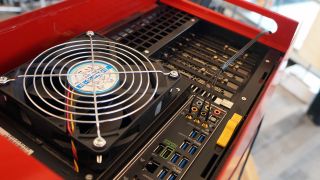
Going from a mini-ITX case to this gigantic one was a bit startling, however, and it almost felt unnecessarily big (but you do need quite a bit of room for a trio of GTX 980s). Despite it changing the layout of my desk, using it day-to-day didn’t feel much different from my PC, apart from the tiny text sizes in some applications. The build quality of the machine is great, but its most expensive components aside from the graphics cards—the $1050 CPU and $500 SSD and $400 X99 motherboard and $400 of DDR4 RAM—are aren't used to their fullest with just gaming. This would be a hell of a video editing rig, though.
At the end of the week, I came away with a feeling of confidence in my own computer. I’ve always been envious of the absurdly powerful rigs I see online and we often feature on Show Us Your Rig, but using one even better than those firsthand brought my fantasies inline with reality.
No doubt that the Red Baron was more powerful than my little Orange Box, but to me that extra power was nowhere near worth the pricetag it came with. To be fair, you can get a Falcon Northwest Mach V for a far more reasonable price: it starts at $2500 on Falcon's website. If you have the money to buy or build a rig like that then you will enjoy the boost that comes with it, but I’m no longer pining for a GTX 980 of my own, let alone three.

